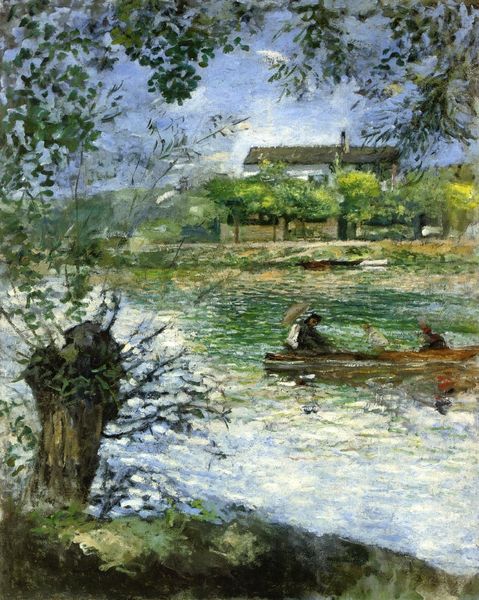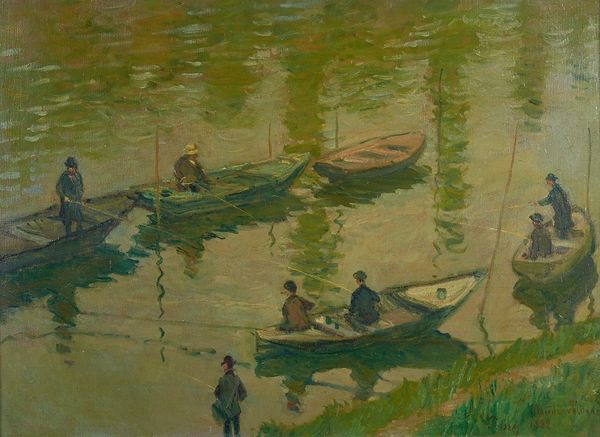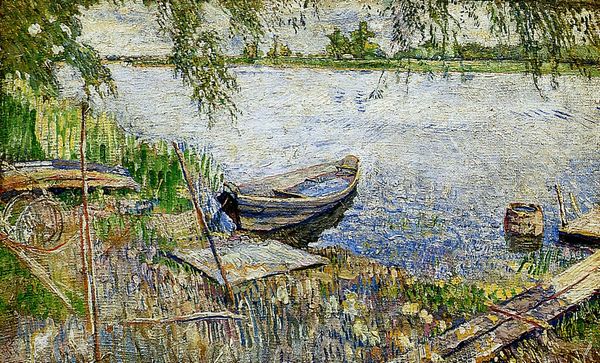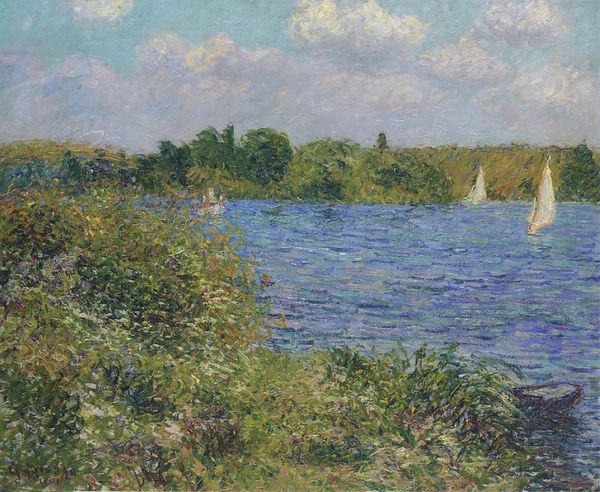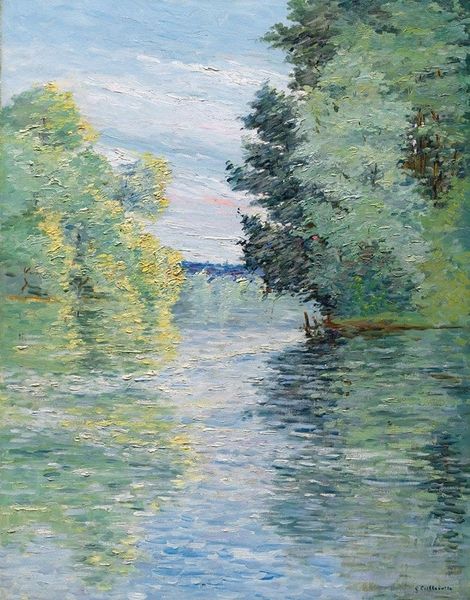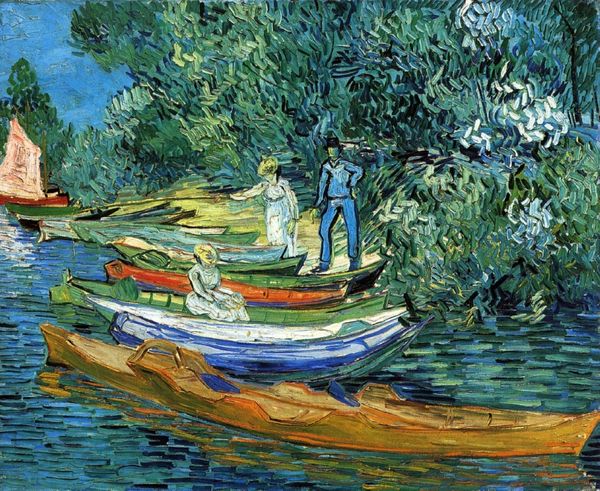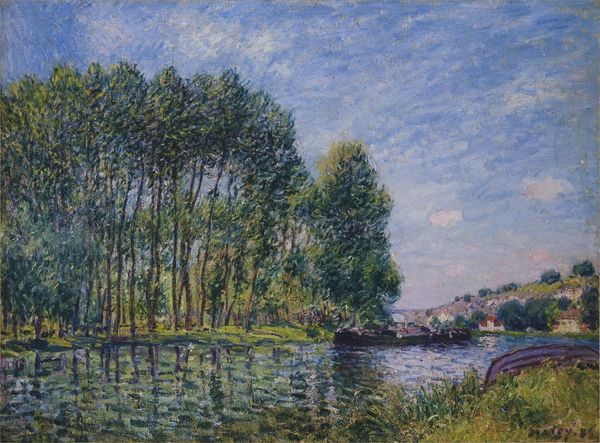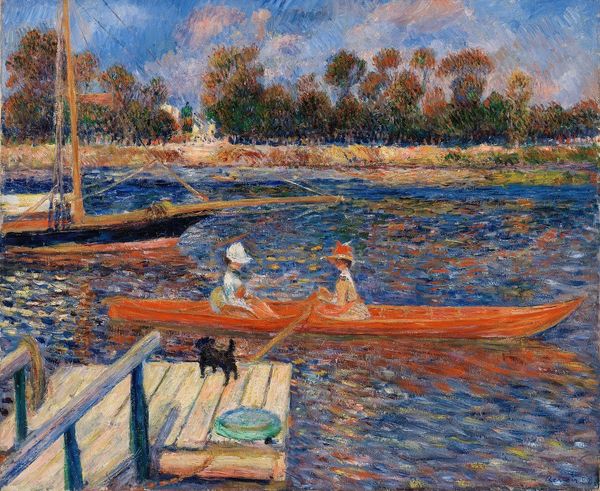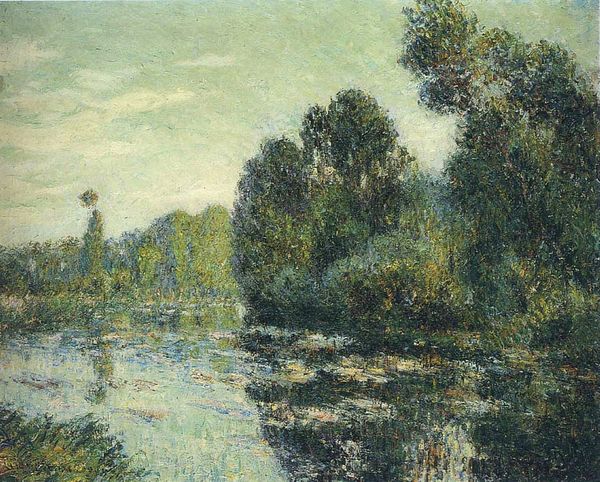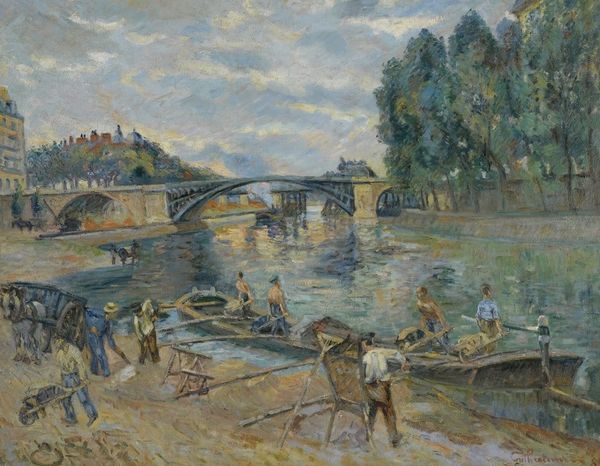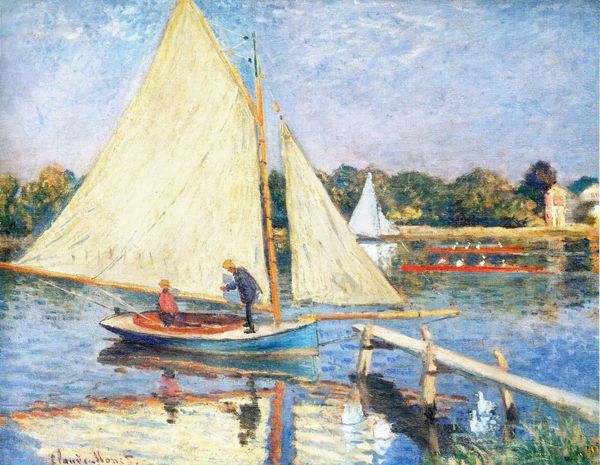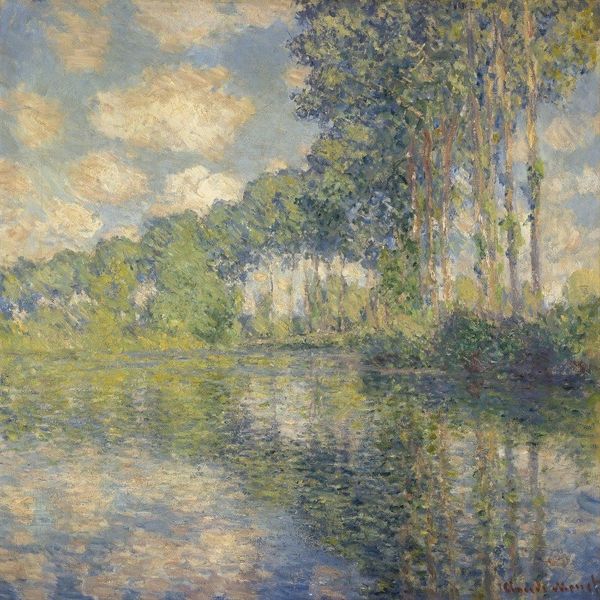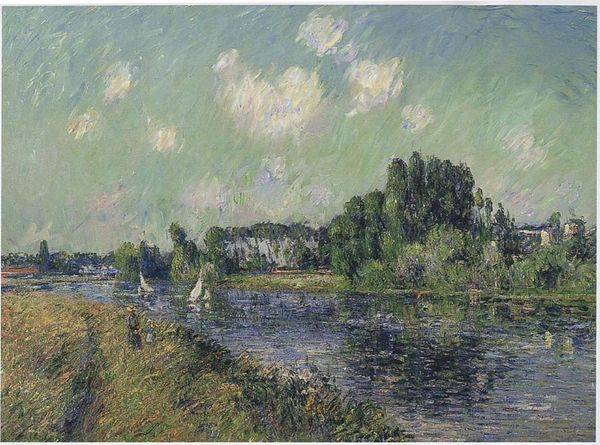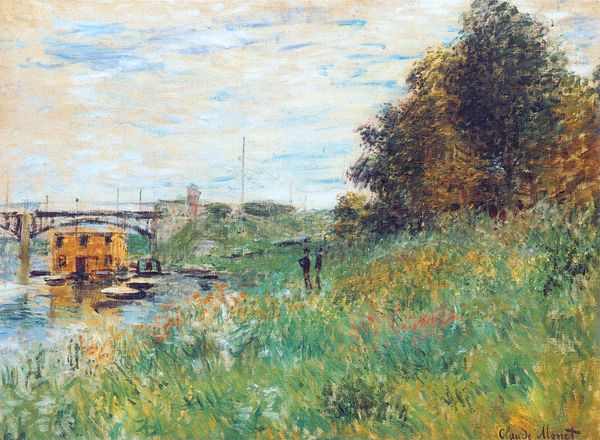
painting, oil-paint
#
narrative-art
#
painting
#
impressionism
#
impressionist painting style
#
oil-paint
#
landscape
#
perspective
#
impressionist landscape
#
nature
#
cityscape
#
post-impressionism
Copyright: Public Domain: Artvee
Curator: Let’s discuss Vincent van Gogh’s “Fishing in Spring, the Pont de Clichy,” created in 1887. The canvas utilizes oil paint to capture this serene waterscape. What are your initial thoughts? Editor: My immediate impression is one of tranquility, a hazy day where the boundary between water and sky feels wonderfully blurred. There's a lightness in the brushstrokes, and I notice a balanced interplay between the verticals of the trees and the horizontals of the bridge. Curator: Absolutely, and if we consider Van Gogh's context, painted during his Parisian period, we see a clear influence of Impressionism, a deviation from his earlier Dutch style. It's worth noting that Van Gogh painted this whilst living with his brother Theo, a key part of a collaborative supply and exchange of art material and support in his practice. The application of these Impressionist theories becomes part of his narrative. Editor: The loose brushwork certainly nods to Impressionism, but I see him pushing beyond simple representation. Notice the density of paint in areas—how he uses impasto to give volume to the foliage and animate the water's surface with directional strokes, there is movement that defies any conventional artistic formula. Curator: Right. It seems a response to industrialization and urbanization as well. The bridge represents connection and progress. But what of the laborers that fish? How are they engaged in the urban context that sits alongside and within the natural one? Are these men pleasure seekers or are they seeking resources to survive within the structures around them? Editor: Those details are fascinating. In particular, I admire the painting’s compositional elements. The placement of the boats and the bridge create depth and a sense of recession, inviting the viewer to explore the space within the frame and question how we navigate that context. Curator: And, finally, it speaks volumes about Van Gogh's development as an artist, the influences and techniques he absorbed while adapting them to reflect his unique sensibilities and material limitations. It shows, fundamentally, a dedication to the art process of production, and, from this example, the emergence of new dialogues surrounding material constraints. Editor: It leaves me pondering the subtle but potent relationship between the individual, the constructed world, and nature as filtered through Van Gogh’s distinct vision.
Comments
No comments
Be the first to comment and join the conversation on the ultimate creative platform.
